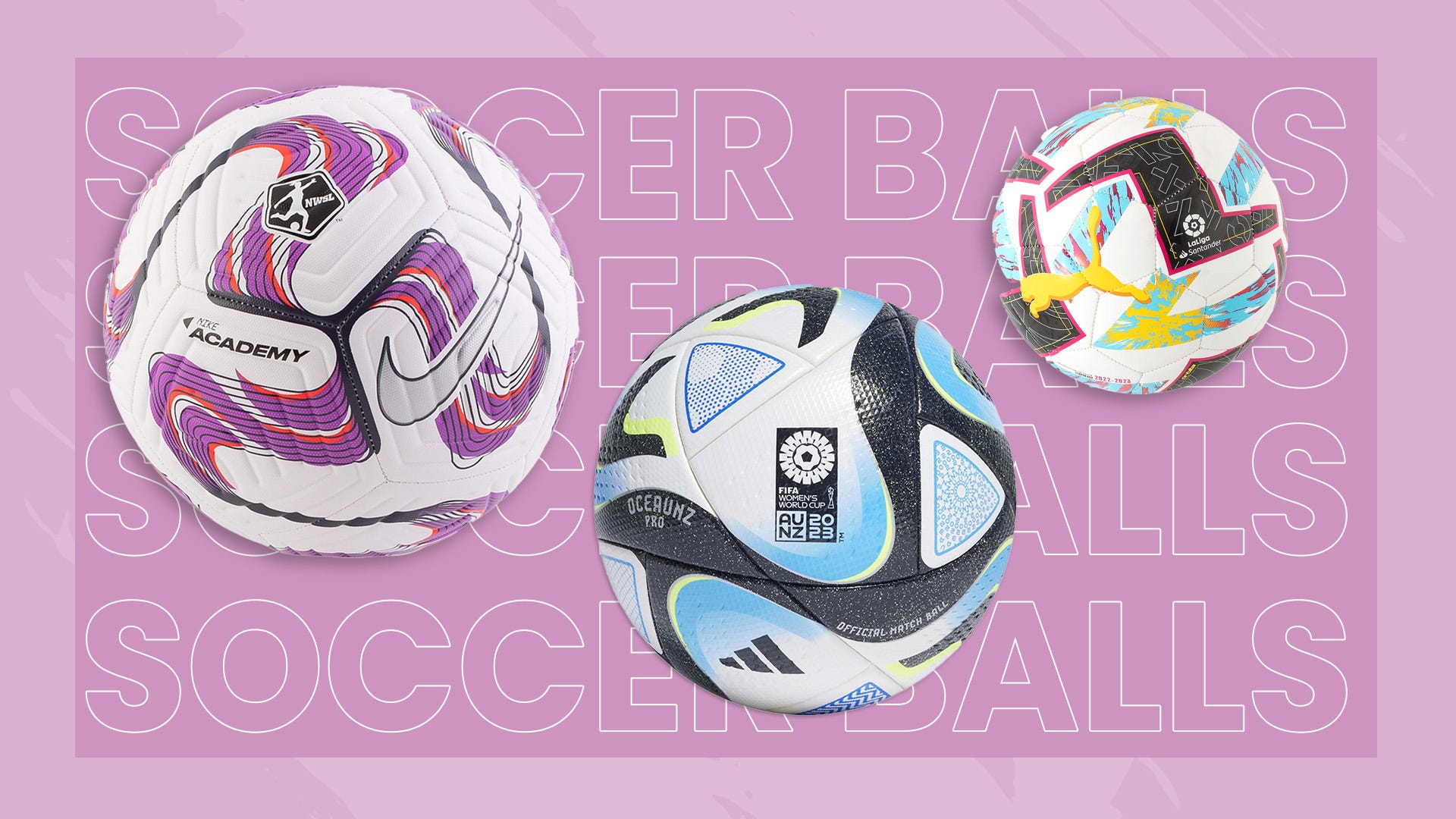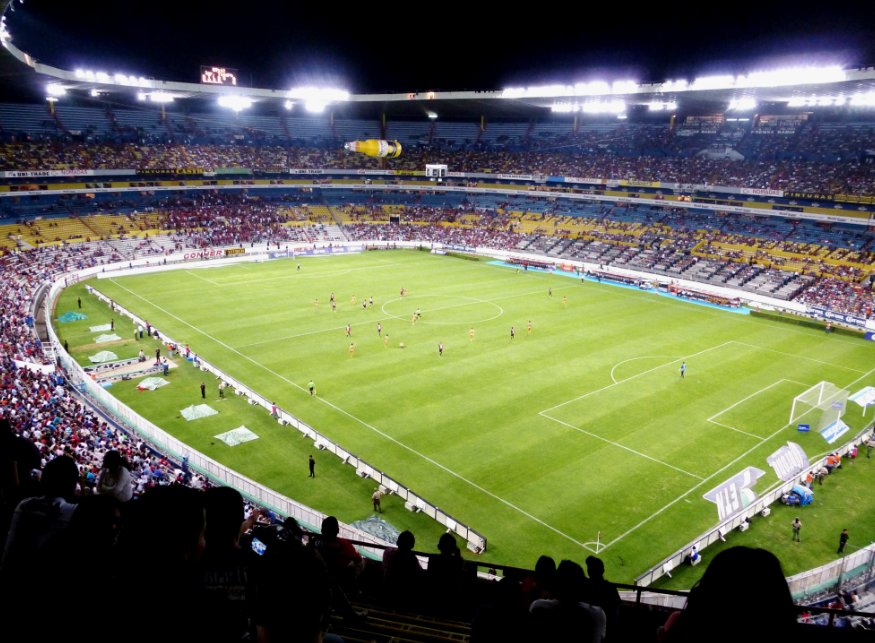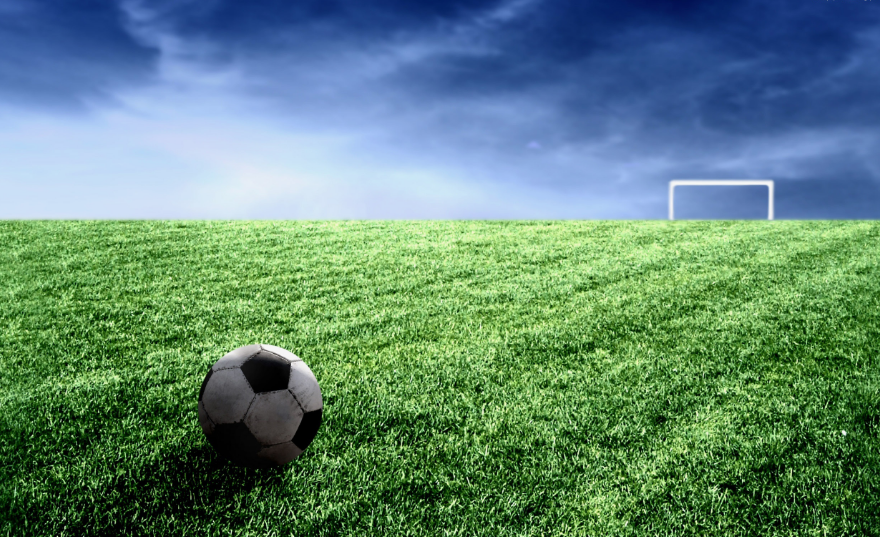Soccer balls come in various materials and durability levels, ranging from leather to synthetic materials. Street soccer balls, in particular, are designed to withstand harsh environments like gravel or concrete surfaces.
Soccer, also known as football in most parts of the world, is one of the most popular sports globally, with over 4 billion fans worldwide. The sport is played with a spherical ball, also called a soccer ball, and two teams of eleven players each. The objective is to score more goals than the opposing team by kicking the ball into the opponent’s goalpost. However, choosing the right soccer ball can be challenging, as it comes in different materials, sizes, and durability levels. This article will discuss how to choose the best soccer ball and why different types of soccer balls exist.
Soccer Balls

History of Soccer Balls
Soccer is one of the most popular sports in the world. It originated in England in the 19th century, and it quickly gained popularity across the globe. Soccer is played with a ball, and this ball has undergone several changes over the years. In this section, we will talk about the history of soccer balls and how they have evolved over the years.
Introduction of Soccer Balls
The earliest soccer balls were made from animal bladders. These small soccer balls were not very durable, and they could not withstand rough play. In the 1800s, rubber was discovered, and it was rolled into balls for the first time. These new soccer balls were much more durable, and they could withstand rough play and harsh weather conditions. However, these balls were still not perfect as they had a tendency to bounce erratically, and this was not suitable for a game like soccer.
Evolution of Soccer Balls
The first significant change in soccer balls happened in the early 1900s when they introduced a new design that featured 20 panels. These soccer balls were made from leather, and they were much more stable than previous balls. Over time, this design was modified, and the number of panels was reduced to 18. This new design was more aerodynamic and could travel long distances with greater accuracy.
In the 1950s, synthetic materials were used to make soccer balls for the first time. This made the balls even more durable and water-resistant, making them suitable for play in all weather conditions. Over the years, several advancements were made, including the use of polyurethane foam, which made the balls softer to the touch and easier to control with the feet.
Modern Soccer Balls
Today, soccer balls come in a variety of sizes and colors. The most common size is size 5, which is the official size for adult soccer games. There are also smaller sizes available for children, such as size 3 and size 4. Soccer balls’ price varies based on the materials used and the brand. Nike soccer balls, Adidas soccer balls, and other brands are widely available in stores and online.
Modern soccer balls are designed to be lightweight, durable, and aerodynamic. They have a surface with a textured finish that helps improve grip and control. The balls also have a bladder made from synthetic materials that maintain their shape even during long hours of play.
Sources
- The Ultimate Guide to Soccer Balls
- Why Soccer Balls Are Made of Hexagons and Pentagons
- How many balls are needed for a soccer match?
Academy Sports + Outdoors, Amazon, Walmart, and The Park Catalog are some of the popular stores that sell soccer balls. For instance, Academy Sports + Outdoors Mini Soccer Ball Black costs $4.99, whereas the Wilson Traditional Soccer Ball costs $24.27. Prices vary based on the size, brand, and materials used. Therefore, it is essential to choose a soccer ball based on your preferences and requirements.
How do I choose a good soccer ball? What makes a good soccer ball? Material and Durability are essential factors that determine the quality of soccer balls. Leather and synthetic materials are the most common materials used to make soccer balls, and synthetic materials are more durable than leather.
Is there a difference in soccer balls? Yes, there are differences in soccer balls. For instance, street soccer balls are designed to withstand the demands of playing on rough surfaces. Beach soccer balls are designed to be more water-resistant and sand-resistant. Indoor soccer balls are designed to have less bounce and be less hard to protect indoor floors.
How many balls are there in soccer? In an official soccer match, three balls are used—one on each goal and the one they are playing with. Big tournaments like the World Cup use five—one on each goal, one on each side, and the one they are playing.
Different Types of Soccer Balls
Soccer balls come in various types, including match balls, training balls, and street balls. These balls differ in materials, durability, and design. Match balls are usually made of high-quality leather, while street balls are rubberized to withstand tougher environments.
Different Types of Soccer Balls When it comes to soccer, choosing the right soccer ball is essential for any game or training session. There are different types of soccer balls, each designed for specific purposes. In this article, we will take a closer look at four main types of soccer balls: match balls, training balls, street soccer balls, and futsal balls. Match Balls Match balls are the official soccer balls used in matches and tournaments. They are made to meet the standards set by FIFA for professional soccer games. These soccer balls size 5 can be used on different field types, and are designed to provide excellent accuracy and control for players during the game. Adidas soccer balls are some of the best soccer balls used as match balls in the soccer world. Training Balls Training balls are designed to help players refine their skills in practice sessions. These soccer balls are more durable than match balls and come in different sizes to accommodate different age groups and skill levels. Training soccer balls are usually designed to hold their shape and provide consistent bounce, even after long usage. Street Soccer Balls Street soccer balls are designed to withstand the demands of playing on rough surfaces, such as concrete and asphalt. These soccer balls are usually made of thicker materials and have a heavier composition than match or training balls. Street soccer balls are designed for indoor and outdoor play and come in different sizes and styles. Futsal Balls Futsal is a game that is played indoors on a hard court with a smaller, heavier ball. Futsal ball is similar in size to size 4 soccer balls but has a reduced bounce, making it easier to control on hard surfaces.
Materials Used For Making Soccer Balls
Soccer balls can be made from leather or synthetic materials that impact the ball’s feel, touch, and overall performance. However, the durability of a soccer ball is also essential to consider when choosing one for the game. Street soccer balls have rubberized materials specifically designed to withstand the harsh playing surface.
Leather Soccer Balls
Leather was the most common material for soccer balls in the early days. Today, leather balls are used in professional teams, and national and international soccer leagues. Leather balls are preferred by players worldwide because of their softness, flexibility, and comfortable feel. They are durable and offer excellent control, which makes them ideal for extended use.
Synthetic Soccer Balls
Synthetic material soccer balls are made of high-quality artificial leather, polyurethane (PU), or thermoplastic polyurethane (TPU) material. They are preferred over leather soccer balls because they are less expensive, water-resistant, and have better durability. Synthetic soccer balls are used widely by amateur players and are available in various designs and sizes for recreational play as well as official matches.

Rubber Soccer Balls
Rubber soccer balls are most commonly used in street soccer or playground games because of their strength and durability. They are designed to withstand the demands of playing on gravel or concrete. Rubber balls have a stronger grip compared to regular soccer balls and are also ideal for children’s play. These balls are lightweight, easy to control, and are available in different sizes and styles that suit every player’s preference.
Choosing the right soccer ball is crucial to your game performance and enjoyment. Depending on the playing surface and individual preferences, you can choose a soccer ball that is made of leather, synthetic, or rubber material. Regardless of the material you choose, always ensure that the ball is durable, has good air retention, and has the right weight for your age group and level of play.
Factors To Consider When Choosing A Soccer Ball
When choosing a soccer ball, there are several factors to consider such as material, durability, and size. These elements can affect the performance and longevity of a soccer ball, and it’s important to choose a ball that fits your needs and preferences for a great soccer experience.
Factors to Consider When Choosing a Soccer Ball: As a soccer player, one of the most crucial decisions you will make is choosing the right soccer ball for your game. There are numerous factors to consider before selecting a soccer ball, and these factors can make a difference in your overall performance. Some of the factors to consider when choosing a soccer ball include the size and weight, surface type of play, and price.
Size And Weight of Soccer Balls
The size and weight of soccer balls are essential factors to consider when choosing a ball that best suits your needs. Small soccer balls are typically used for junior players, while size 5 soccer balls are used for adult players. A size 5 soccer ball weighs between 410 and 450 grams and has a circumference of between 68 and 70 centimeters. On the other hand, a size 3 soccer ball weighs between 320 and 360 grams and measures between 58 and 60 centimeters in circumference.
Surface Type of Play
The surface type of play is another factor to consider when choosing a soccer ball. Different soccer balls are designed for specific playing surfaces. Nike soccer balls, Adidas soccer balls, and other brands provide soccer balls that are suitable for playing on grass, artificial turf, or indoor courts.
Price of Soccer Balls
The price of soccer balls varies depending on the brand, size, and quality of the ball. Academy Sports + Outdoors Mini Soccer Ball Black is one of the least expensive soccer balls in the market, coming in at $4.99, while the Adidas UCL Pro Ball is one of the most expensive soccer balls, priced at $169.99. It is crucial to determine your budget and choose a soccer ball that is worth the value for your money. In conclusion, selecting the best soccer ball can have a significant impact on your game. By considering factors such as the size and weight of soccer balls, surface type of play, and price, you can make an informed decision on the best soccer ball for your playing style. Always remember to select a ball that is comfortable and suitable for your playing needs, whether you prefer high-quality soccer balls from popular brands such as Nike soccer balls or Adidas soccer balls or more affordable options like Academy Sports + Outdoors.
Famous Soccer Balls of All Time
From the iconic Adidas Telstar that was used in the 1970 World Cup in Mexico, to the modern Adidas Jabulani used in the 2010 World Cup in South Africa, soccer balls have become legends in their own right. These balls have been used to score game-winning goals and break records in the world of soccer.
Famous Soccer Balls of All Time When it comes to the history of soccer, the ball itself has always been an integral part of the game. Over the years, many iconic soccer balls have been used in major tournaments, including the World Cup. In this section, we will take a closer look at three of the most famous soccer balls of all time: The Adidas Telstar, The Adidas Tango, and The Adidas Fevernova. The Adidas Telstar The Adidas Telstar was the first-ever soccer ball to be used in the FIFA World Cup. It made its debut in the 1970 tournament held in Mexico. The Telstar was made up of 12 black panels and 20 white panels, which were arranged in a classic design that became an instant hit. The ball was named after the Telstar satellite and was made using synthetic materials instead of leather. It is considered a classic among soccer balls and was used in subsequent World Cups until 1978. The Adidas Tango The Adidas Tango is another iconic soccer ball that has played a major role in the history of the game. It made its debut in the 1978 World Cup held in Argentina. The Tango featured 20 panels in white and black, arranged in an innovative and unique design. Instead of the traditional stitching, the Tango had interlocking panels, which made it more aerodynamic and easier to control. This ball became an instant classic and was used in numerous World Cups and other major tournaments. The Adidas Fevernova The Adidas Fevernova was the official ball of the 2002 FIFA World Cup held in South Korea and Japan. The ball was made up of six triads of panels, each comprising three colors: red, gold, and black. The Fevernova was designed to be more accurate, faster, and more stable in flight than its predecessors. It was made using synthetic materials and had a textured surface for better grip and control. Conclusion These three soccer balls have left a lasting impression on the history of the game. They are a testament to the innovation, creativity, and skill involved in creating an outstanding soccer ball. Whether you are a professional player or a fan of the game, these balls are sure to be memorable and a timeless reminder of the beautiful game.
How Do You Take Care of Your Soccer Ball
Proper care and maintenance of soccer balls can prolong their lifespan and improve their quality. This involves storing the balls in a cool, dry place, keeping them clean, and inflating them to the appropriate pressure. Always inspect your ball before and after every use to identify any damages or wear and tear.
How Do You Take Care of Your Soccer Ball? Soccer balls are an essential item for any soccer player. Once you find the perfect ball, it’s important to take care of it to ensure it lasts for a long time. Proper maintenance can make a huge difference in the ball’s lifespan, and it also ensures the ball performs at its best. To keep your soccer ball in good shape, here are some tips for taking care of it. Cleaning Your Soccer Ball Keeping your soccer ball clean is a crucial aspect of its maintenance. It’s important to clean the ball after every use to remove any dirt, grass, or mud that might have accumulated on it. This will not only help prevent damage to the ball but also keep it looking brand new. To clean your soccer ball, take a damp cloth and wipe down the surface of the ball. Avoid using harsh chemicals or abrasive cleaning products, as they can damage the ball’s surface. If the ball is extremely dirty, you can mix some mild soap with warm water and use a soft brush to clean the ball gently. Proper Storage of Soccer Balls When not in use, soccer balls should be stored in a dry and cool place. Exposure to extreme temperatures can damage the ball’s material, causing it to deflate or even split. A good option is to store your soccer ball in a ball bag, which will protect it from dust and moisture. Inflation of Soccer Balls Proper inflation is another important aspect of a soccer ball’s maintenance. Over-inflated balls will perform poorly, and under-inflated balls can lead to damage. To ensure your soccer ball is inflated to the correct pressure, refer to the manufacturer’s recommendations for the recommended psi. A good practice is to use a pressure gauge to measure the ball’s pressure before every use. Always use a hand pump to inflate the ball, as electric or foot pumps can overinflate the ball and cause damage. In summary, following these simple tips can keep your soccer ball in top condition and enhance its lifespan. Regular cleaning, proper storage, and inflation will help maintain the ball’s performance, and ultimately make your playtime more enjoyable.
Soccer Ball Tricks And Skills
Improve your soccer game by learning new ball tricks and skills. Practice your juggling, dribbling, and shooting techniques to build confidence and precision on the field. With the right ball and lots of practice, you’ll be a soccer superstar in no time.
If you’re a soccer fan, you know that soccer is not just about scoring goals; it’s about the thrill of watching your favorite players perform incredible soccer ball tricks and skills. These tricks and skills may seem impossible, but with enough practice and dedication, anyone can perfect them.
The Rainbows
One of the most impressive soccer ball tricks is the Rainbow. To perform this trick, you need to flick the ball over your head and then jump with one foot while the other foot kicks the ball in the opposite direction. The Rainbow is a beautiful trick that requires precise timing and footwork.
The Around The World
Another impressive soccer ball trick is the Around the World. This trick involves circling the ball with one foot while keeping the other foot stationary. To do this, the player must flick the ball up with one foot, circle the ball with the other foot, and then catch it with both feet. The Around the World is a complex skill that requires practice and sharp focus.
The Scissors
The Scissors is a simple yet effective soccer ball trick that can help you deceive an opponent. To perform the Scissors, you need to step over the ball with one foot and then quickly step over it again with the other foot. This trick creates the illusion that you’re going to move in one direction, but you quickly change direction with the other foot. When it comes to soccer balls, there are various types of soccer balls available on the market, including small soccer balls, soccer balls size 5, and high-quality soccer balls such as Nike soccer balls and Adidas soccer balls. Soccer ball prices may vary depending on the brand and the quality. To perform these tricks and skills, you need a good quality soccer ball that is durable and responsive. A good soccer ball is usually made of high-quality materials such as leather or synthetic materials, which can withstand the harsh conditions of the game. Some of the best soccer balls are WILSON Traditional Soccer Ball, Adidas Unisex-Adult Tango Glider Soccer Ball, and Nike Premier League Academy Soccer Ball. In conclusion, honing your soccer ball tricks and skills can make you stand out on the field. Practice consistently and use the right soccer ball for you, and you’ll be well on your way to becoming a soccer ball trick and skill expert.

Future of Soccer Balls
The future of soccer balls is gradually shifting towards sustainability. Manufacturers are using eco-friendly materials to create durable and high-performance balls that reduce impact on the environment. Designs are also advancing with the integration of technology such as smart soccer balls that track performance metrics and offer training and coaching feedback.
The future of soccer balls is an exciting topic for all soccer enthusiasts. We’ve come a long way from the days when a ball made of stitched-up leather was the only option. With technological advancements, soccer balls are now made from different materials to increase their durability, performance, and puncture resistance. In this blog post, we’ll discuss the new and innovative materials used for soccer balls and the possible changes that could come in design.
New And Innovative Materials For Soccer Balls
Soccer ball manufacturers are exploring different materials to make balls that last longer and perform better. Here are some of the new and innovative materials that are being used in soccer balls:
- Thermoplastic polyurethane (TPU): TPU is a durable material that has excellent abrasion resistance and is resistant to punctures. It has a high elasticity which ensures softer ball touch and better ball control.
- Thermoplastic elastomers (TPE): TPE is a soft and flexible material that provides a cushioned feel to the ball. It gives soccer balls a softer touch and helps to reduce the impact on the player’s feet and head.
- Microfiber: Microfiber is a synthetic material that is becoming increasingly popular in the making of soccer balls. It’s highly durable, lightweight, and has a good aerodynamic design for better performance.
- Reinforced rubber: Reinforced rubber is commonly used in street soccer balls. It’s a heavy-duty material that can withstand the wear and tear of playing on tough surfaces.
Possible Changes To Soccer Ball Design
The design of soccer balls has remained relatively unchanged for years. However, some potential changes could come to soccer ball design in the future:
- Incorporation of new technology: Manufacturers could incorporate technology such as sensors into soccer balls to provide players with real-time data on the ball’s speed, trajectory, and more.
- Reduced weight: Soccer balls could become lighter, which would make them easier to kick and have better performance.
- Increased grip: Manufacturers could alter the surface of soccer balls to give them better grip and control, particularly in wet conditions.
- New shapes: While the traditional hexagonal and pentagonal designs of soccer balls are unlikely to change, manufacturers could experiment with new shapes to increase aerodynamics.
In conclusion, the future of soccer balls is bright, and we can expect to see more innovative materials and changes in design to enhance their performance. As soccer balls continue to evolve, players will be able to enjoy a better game, and soccer fans will have more to look forward to on the pitch.

Frequently Asked Questions of Soccer Balls
How do I choose a good soccer ball?
Choosing a good soccer ball is crucial for a great game. Look for a ball made of leather or synthetic materials and with high durability. Additionally, consider the size and age group it is suitable for. Street soccer balls are designed for play on concrete surfaces.
Why are soccer balls shaped like that?
Soccer balls are shaped with hexagons and pentagons to create a round shape that is easy to kick and control. Using this combination of shapes evenly distributes the air pressure, giving the ball a predictable flight and bounce. This design was first used in 1970 for the World Cup and has been the standard ever since.
How many balls are there in soccer?
In an official soccer match, three balls are used – one for each goal and the one being played with. However, big tournaments like the World Cup use five balls – one for each goal, one on each sideline, and the one being played with.
Is There a difference in soccer balls?
Yes, there is a difference in soccer balls. Soccer balls may vary in size, weight, material, and durability, depending on their intended use and the level of play. Street soccer balls, for instance, are designed to withstand harsh playing environments and may have rubberized materials, whereas professional soccer balls are made of leather or synthetic materials and must meet FIFA standards.
Conclusion
As you can see, soccer balls are an essential item for any soccer player or enthusiast. It’s important to choose the right type of ball based on the intended use and the individual’s needs and preferences. Whether you opt for a leather or synthetic ball, the main factors to consider when selecting a soccer ball are the material, durability, and appropriate sizing. By taking all these things into account, you can find the perfect soccer ball to suit your game and ensure that you enjoy every moment on the pitch.




